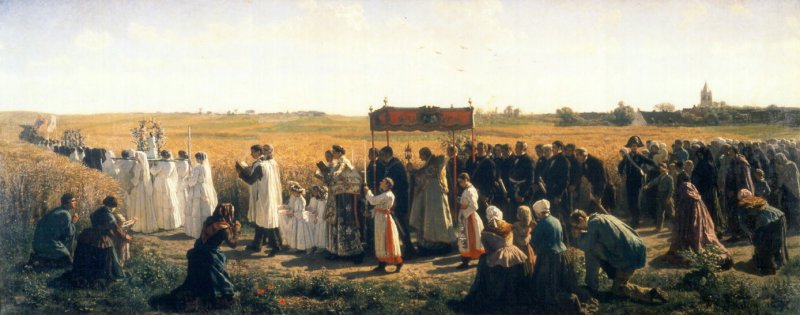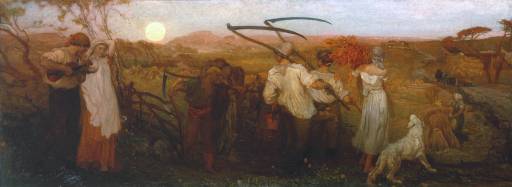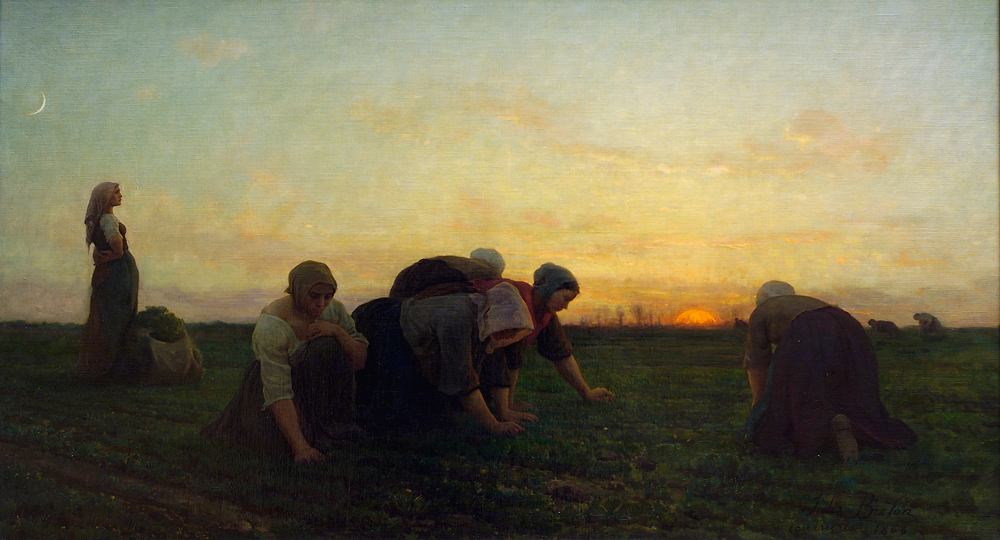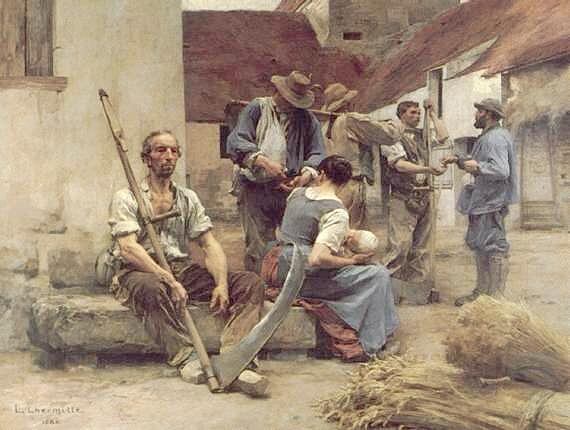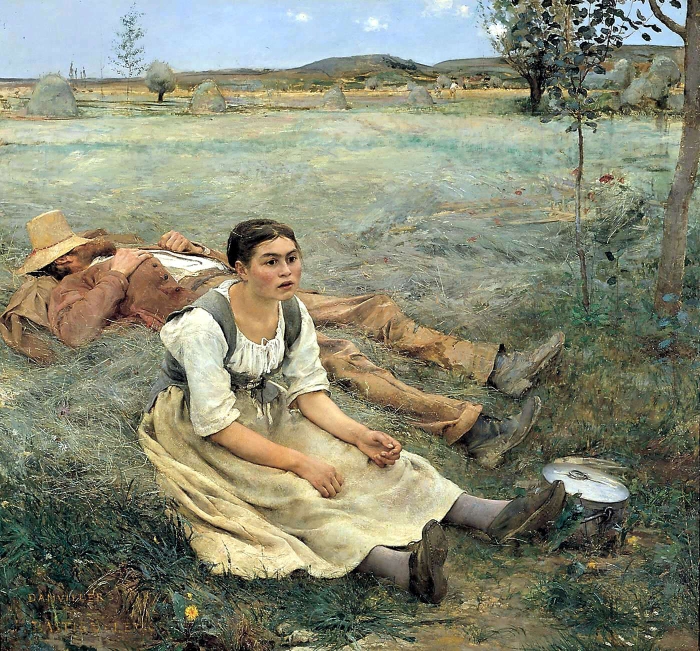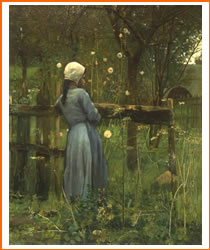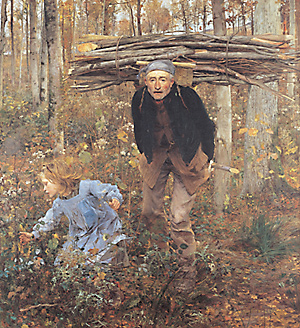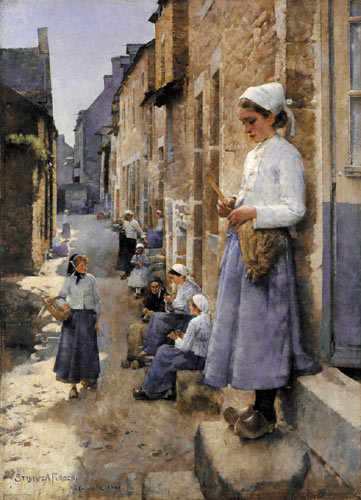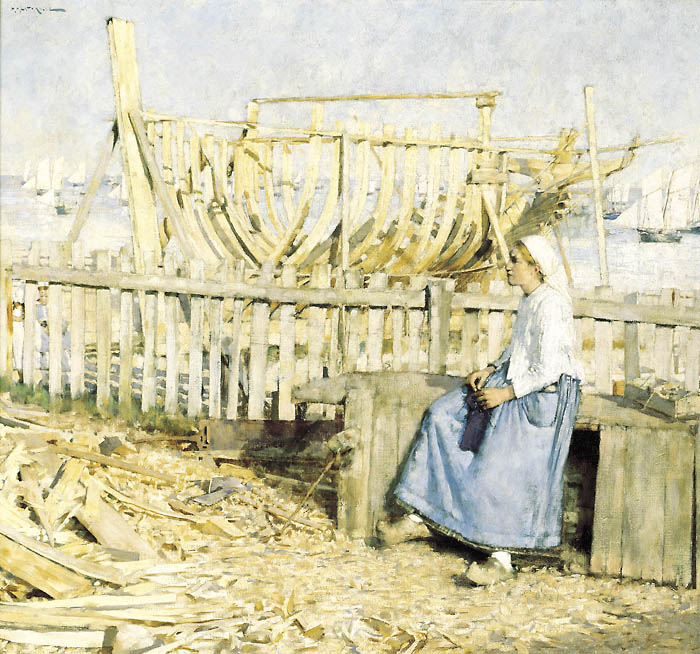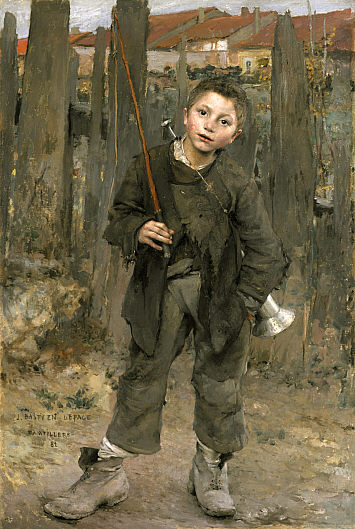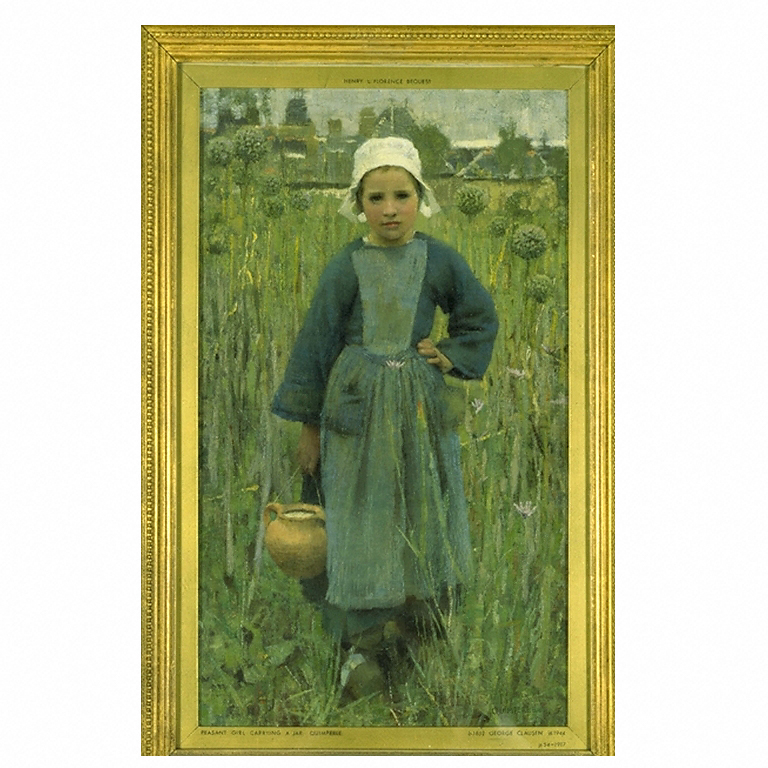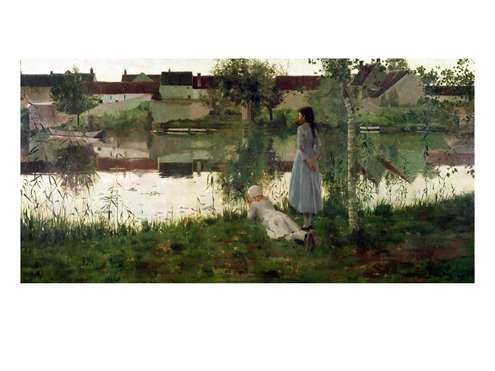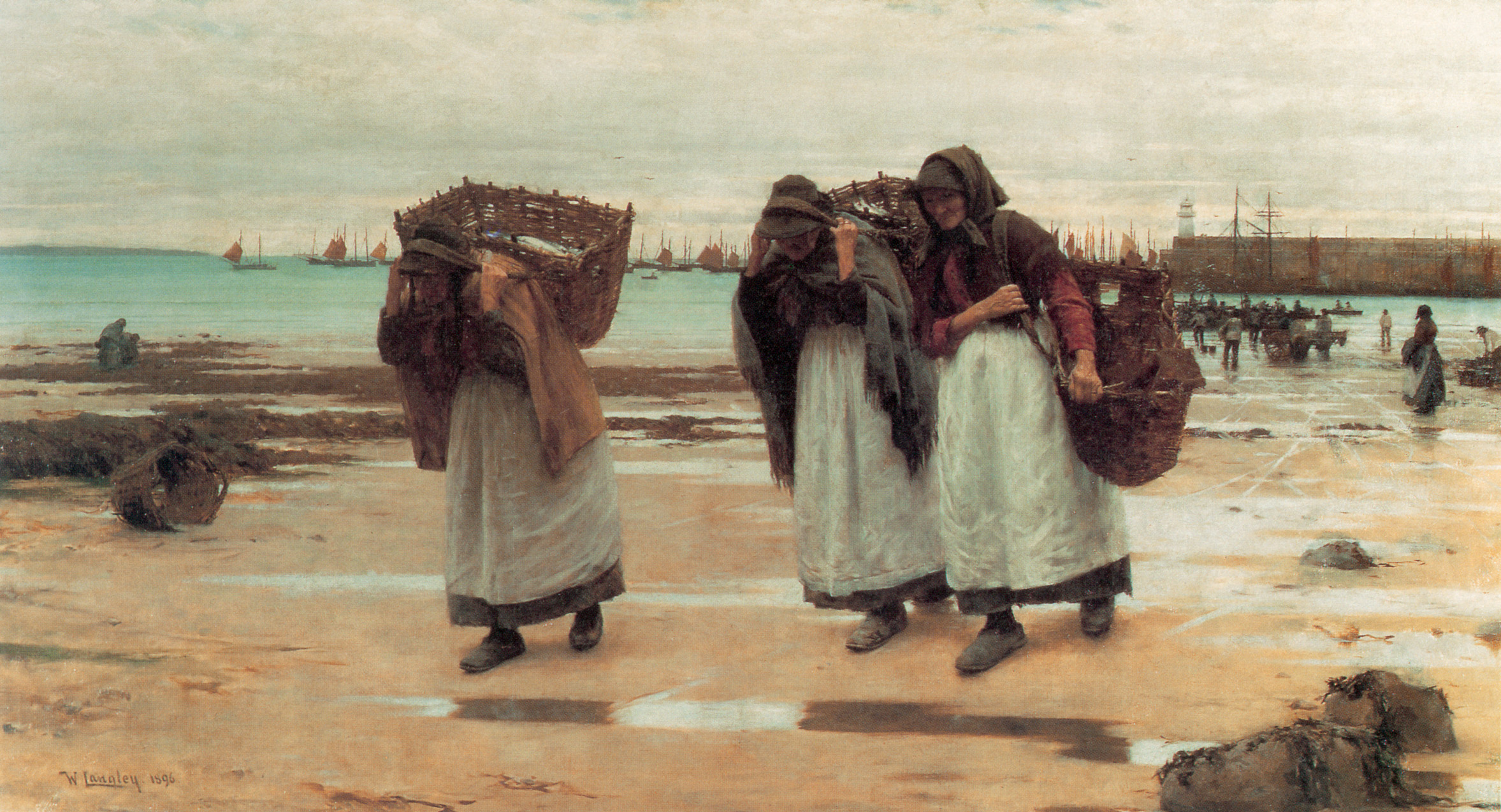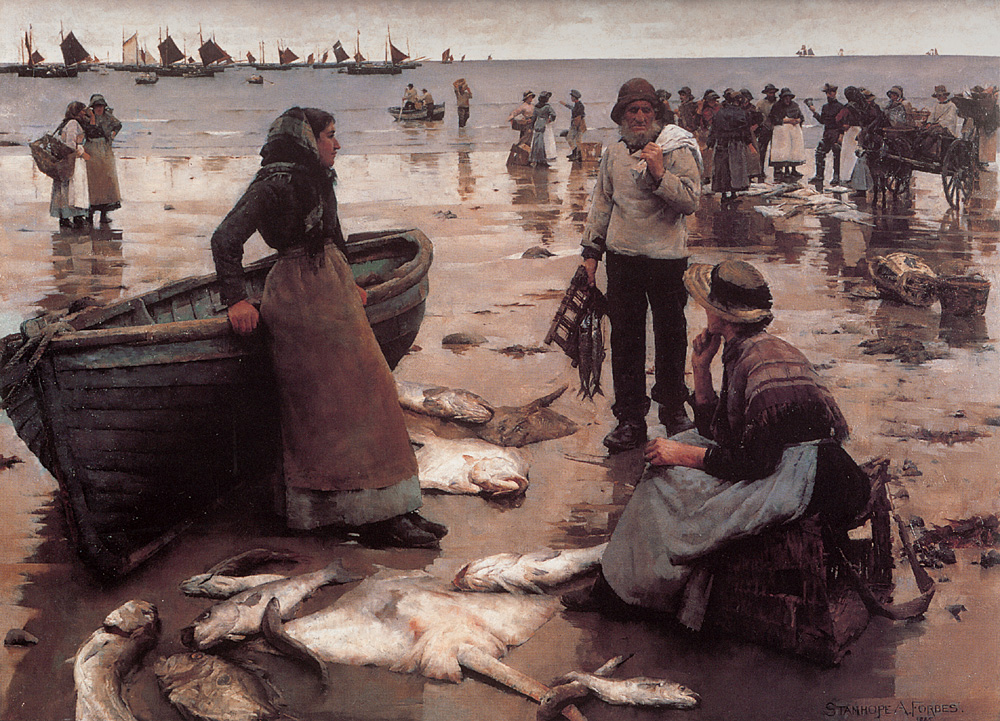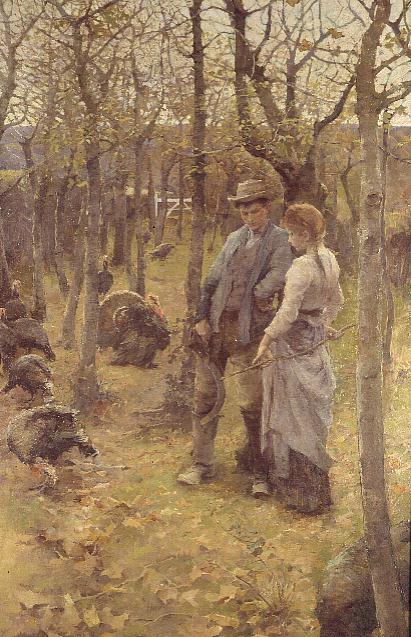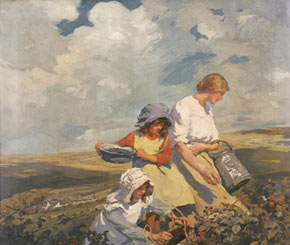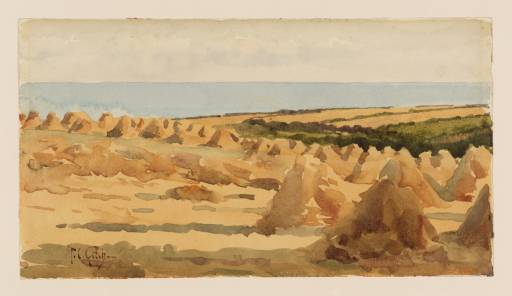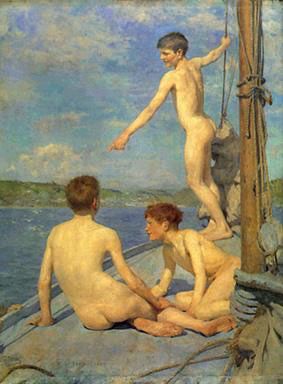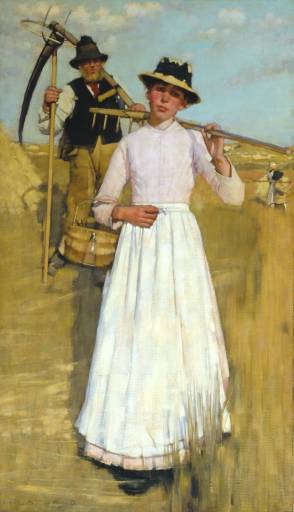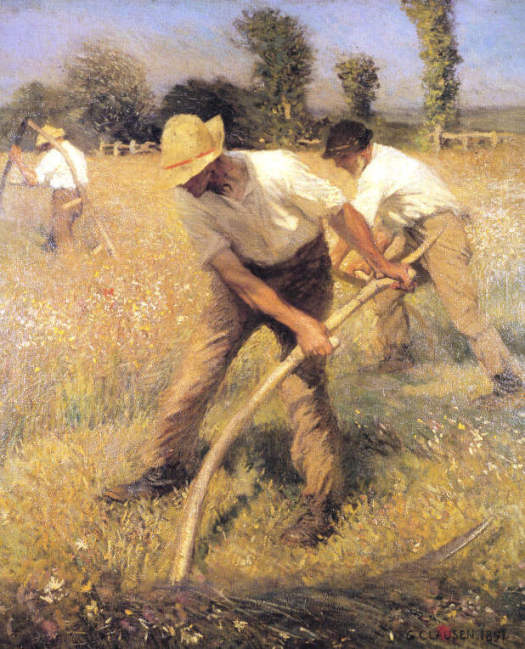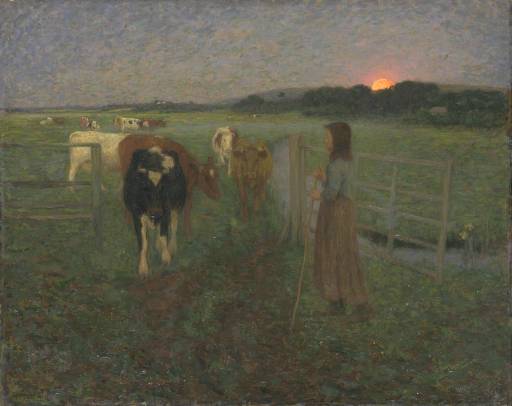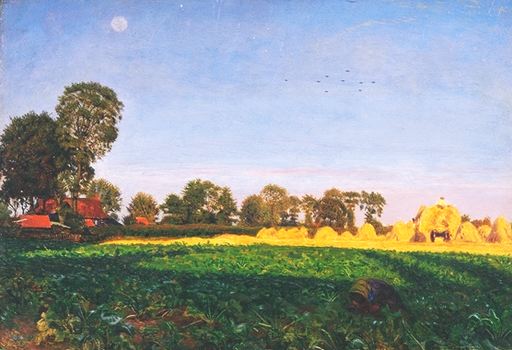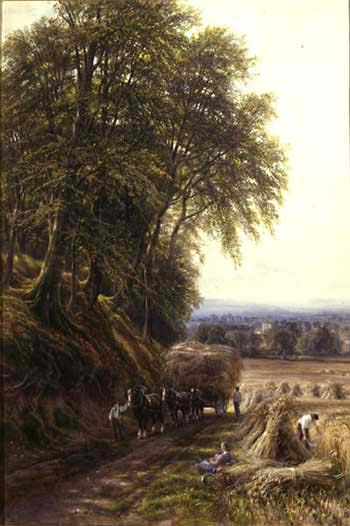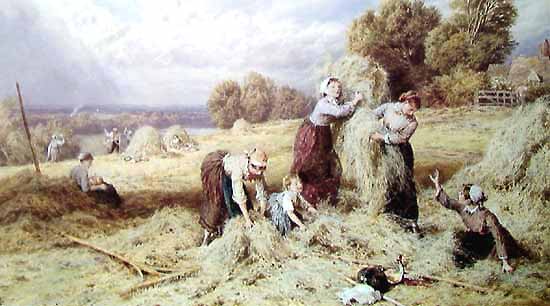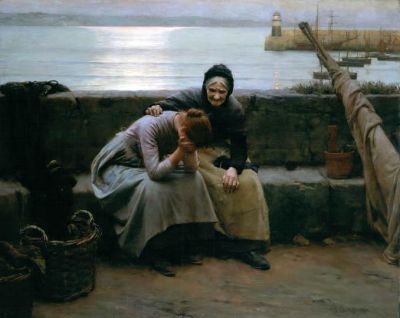19th Century Landscape Synoptic Issues
Idealisation versus naturalism
Patterns
- Dissolution of genres and “isms”
- Multiplication of training and markets
- British Institute
- Free Exhibition
- 1871 Slade
- 1877 Grosvenor Gallery
- Gambert (important to PRB)
- Agnews
- Durand-Ruel
- Technical experimentation and diversity (watercolour and oil)
- New oil painting techniques arose out of w/c techniques
- Palmer gum arabic technique
- Pre-Raphaelite wet-on-white
- Artifice – consciousness of artistic input, the paint surface (goes back
to Turner and Constable) - Emotional, spiritual aspects of painting arise from close study of
realistic landscapes. - Experimentation
Patrons
- Coombes – Hunt, Millais
- Sheepshank – early – bought Wilkie, Mulready
Realism in England
Result of French influence. Influence of Millet, Angelus exhibited in London
by Durand-Ruel in the early 1870s and it was seen by Clausen. Millet prints were
available such as “The Walk to Work”, 1851, engraved 1861, c.f. Wallis’s
Stonebreaker. Poetic, romanticization of the labourer.
Jules Breton – Benediction of the Wheat at Artois, 1857 (doing Courbet in an
establishment way).
Mason, The Harvest Moon, 1872.
Breton, The Weeders.
Leon l’Hermitte, Payment of the Hay Gatherers.
Bastien Lepage, Les Foins (the Hayfield), 1878, Grosvenor Gallery. A response to
photography, blurred background, stress on light and dark, crisp foreground.
William Stott, Girl in a Meadow.
Bastien Lepage, The Wood Gathere, 1881
Stanhope Forbes,
A Street in Brittany, 1881. He studied at Monnet’s studio, he was an
RA and this painting was bought by Liverpool. It is responding to photography
and “going away” primitivism and responding to the particular location and
models.
Hacker, The Turnip Field, 1882.
Specific location and models pioneered by the PRB.
La Thangue, Boat Builder’s Yard, 1882. He was English but trained in France.
Bought by James Maddox, a Bradford industrialist.
Bastien Lepage,
Pas Meche, 1882. Tooth Gallery, bought by Stanley Spencer.
Stanhope Forbes,
The Concert, 1882, RA 1883. In 1883 there was an Impressionist exhibition staged
by Durand-Ruel at Dowdeswell’s Gallery in Bond Street. Dowdeswells Gallery, 1890.
Clausen,
Peasant Girl Carrying a Jar, Quimperle, 1882
(V&A).
There are many sentimental paintings in England at this time with children,
e.g. Millais’s Bubbles.
Bastian Lepage, 1882, big brush act (brought in by the Impressionists).
McConkey says it is honest and democratic as there is only one stroke type.
William
Stott, The Ferry, 1882, Salon Medal, exhibited in Paris and won the Third
Class Medal.
Newlyn School
Walter Langley, The Breadwinners, 1896, w/c
The pursuit of authenticity, less artificial, no artificial poses.
Turner painted Newlyn, Forbes discovered it but Langley was already there.
Stanhope Alexander Forbes (1857-1947), A Fish Sale on a Cornish Beach, 1885. Forbes believed he had to paint
in discomfort, the harder it is to paint the better the painting.
Hunt wrote to a friend he was thinking of throwing away Scapegoat as he did
not paint it on the spot.
Elizabeth Forbes, The Edge of the Wood, 1894. Better than her husband.
Many of the paintings were done from studies and photographs although this
was a controversial idea at the time.
Aesthetically liked:
- Japanese prints
- Photographs
- Engravings of e.g. Millais
Elizabeth Forbes, Blackberrying, 1906.
Thomas Cooper Gotch, Cornfields above Lamorna (w/c)
Tuke, The Bathers, 1885, Newlyn.
New English Art Club (a place to exhibit). First exhibition was around April
1886, the mont before the Summer Exhibition. It allowed more French style
paintings to be exhibited.
La Thangue, The Return of the Reapers, 1886.
Painting like the French, i.e. naturistically, i.e. painting from the nude.
Clausen, The Mowers, 1897.
Edward Stott, Changing Pastures, 1893.
PRB Realism
Ford Maddox Brown,
Carrying Corn,
1854/5
Hunt, Hireling Shepherd
Millais, The Blind Girl
English Realism
Linnell, Harvest Moon
Cole, Harvesters
Davis, Harrowing
French Realism
Courbet
Legros
Bastian Lepage
L’Hermitte
See the Tate commentary on Walker’s The Vagrants, 1868, note the use of the
word “real”. Why? Note the robin.
See George Vicat Cole, Harvest Time, 1860 (Tate).
Jules Breton, The Weeders, discovered the subject as a “finished picture”.
Constructing Nationalism
- Maps the land
- Shows it occupied
- “Traditional” customs
- Productivity
Heroization of the working class? McConkey argues the French did but not the
English – is this true?
Miles Birket Foster, The Hayfield.
Literary “clap trap”, Whistler quote, English painting is too literal.
Langley, Never Morning
Wore to Evening but Some Heart Did Break.

